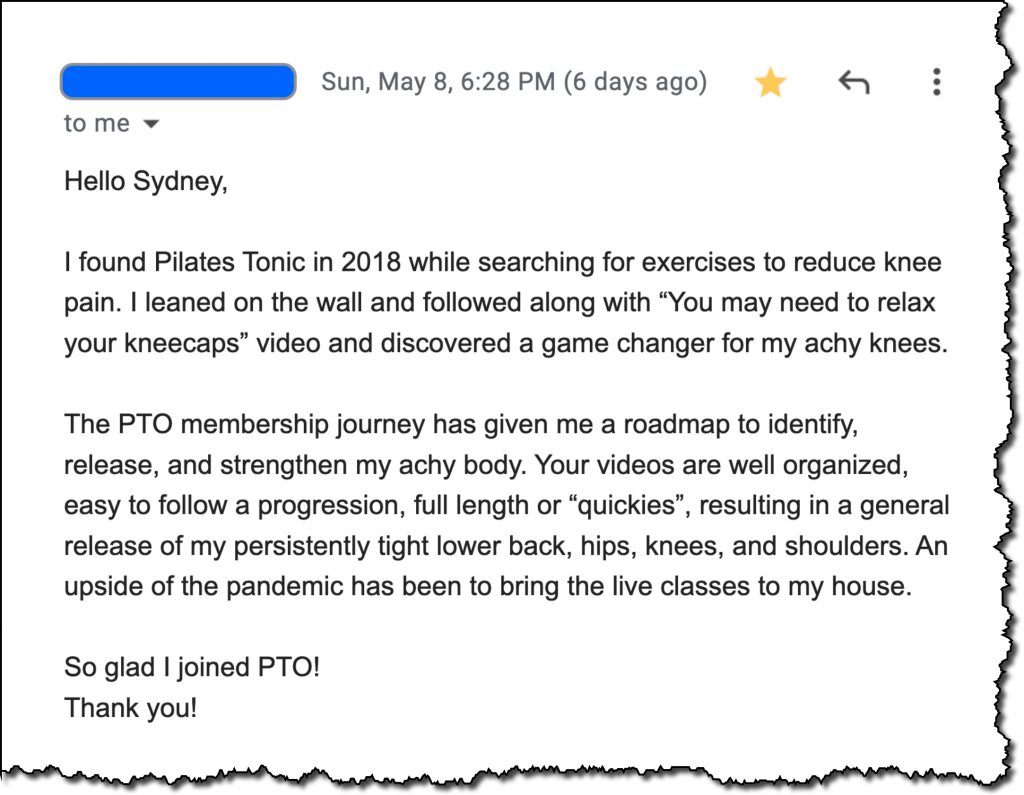If you’ve ever taken a Pilates class, you’ve probably heard the term “neutral pelvis.”
When I first started taking Pilates in 2001, I heard it all the time.
“Find your neutral.”
“Make sure your pelvis is in neutral.”
I had no idea what it meant.
But I could tell from the tone of the instructor’s voice it was something I needed to know.
Fast forward to my Pilates teacher training program in 2004 with me standing in front of the class, my peers trying to cue me into neutral when the teacher says…
“She can’t find neutral because ‘the work’ hasn’t translated into her body.”
These words were jarring, and once again, I had no idea what she meant.
I thought I was following their instructions.
I thought I was in neutral.
It was the moment I began to realize my alignment wasn't what I thought it was.
Better said, my alignment wasn’t what I felt it was.
It turns out my pelvis was pretty much stuck in a tucked state.
I stood, walked, sat, and practiced Pilates with my pelvis tucked—and had absolutely no idea.
Tucking was my habit, so it felt 100% normal.
And when my pelvis was in neutral, it felt SO wrong—like I was arching my lower back and sticking my butt out in a really exaggerated way!
Eventually, I used a mirror to prove to myself how normal I looked with a neutral pelvis.
Eighteen years later, I still have to remind myself to stop tucking, but that’s okay because my body functions and feels SO MUCH better than it used to.
So, what’s the big deal about a neutral pelvis, and why might you care?
When your pelvis is in neutral:
Your butt muscles work when you walk and make walking waaaay more efficient.
A working booty means better balance and a rear-end that stays lifted with the ease of every step you take.
Your deep abdominal and spinal muscles naturally activate, so standing and sitting tall is easier, and your spine is much more stable.
Your pelvic floor loves a neutral pelvis because it can automatically contract as needed throughout the day without thinking about it.
When your pelvis is in neutral, the curves of your spine easily align, setting your spine up for shock-absorbing success.
In today’s video, I’m breaking neutral pelvis down and showing you how to find it for yourself.
After you check out the video, I’d love to know your take. Make sure to let me know in the comments below the video.
Untucked,
Sydney
P.S. Want to learn more about optimizing your alignment for a body that feels amazing and don’t live near Chattanooga?
Check out Pilates Tonic Online (PTO) our online studio.
PTO is a self-paced membership that costs $79 a month.
You’ll learn stuff like you learned in this email and so much more.
With PTO membership, every month, you get:
- Two Live Zoom Classes + the class recording (so you never have to worry about missing a class.)
- Two new movement videos
- The Membership Journey to set yourself up for alignment success and get more out of every other exercise you do.
- Unlimited access to the PTO Video Library
- Weekly emails
Learn more about Pilates Tonic Online and register…
If you have any questions, contact me directly and ask away!
Here’s what one PTO member had to say:










2 Responses
Hi Sydney,
Thank you, that was a great video about neutral pelvis. And I loved what your teacher said about why you couldn’t find neutral. 🙂
You mentioned correcting an anterior tilted pelvis at the ribcage instead of at the pelvis. How would you correct it at the pelvis? I have an anterior tilted pelvis and I probably think I’m in neutral when I’m not.
Thanks for all the great information you share. It’s so helpful. —- beth
Thanks for your great question, Beth! Often what looks like an anteriorly tilted pelvis is more of a rib thrust. Dropping the ribs when standing/sitting and bolstering them when lying down will frequently bring the pelvis into neutral. Psoas and iliacus release exercises can be helpful too; which I have coming up soon!